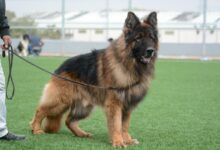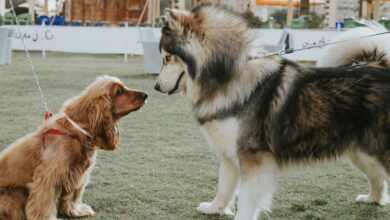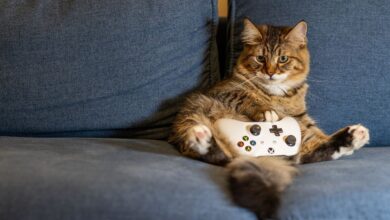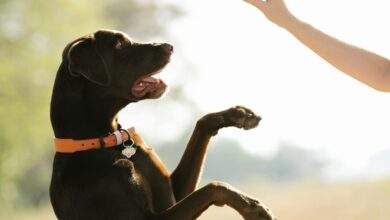
Bringing a new puppy into your home is an exciting adventure, but it also comes with the responsibility of training them to become a well-behaved and obedient companion. Puppy obedience training lays the foundation for a harmonious relationship between you and your furry friend. In this guide, we’ll explore the essential elements of puppy training, from basic commands to effective training techniques.
Table of contents
Why Puppy Training Matters
Puppy obedience training is more than just teaching your pet to sit or stay; it’s about fostering good behavior, ensuring their safety, and building a strong bond between you and your pup. A well-trained puppy is a happy puppy and a joy to have around.
Basic Obedience Commands
Sit
Teaching your puppy to sit is one of the fundamental commands. It’s useful in various situations, from greeting guests to preventing your pup from jumping on people.
How to Teach “Sit”
- Begin in a quiet, distraction-free area.
- Hold a treat close to your puppy’s nose and move your hand upward.
- As your puppy follows the treat with their nose, their bottom will naturally lower into a sitting position.
- Once they sit, immediately say “sit” and reward them with the treat and praise.
Stay
The “stay” command helps keep your puppy in one place until you release them. It’s crucial for safety and control.
How to Teach “Stay”
- Start with your puppy in a sitting position.
- Show them the palm of your hand, say “stay,” and take a small step back.
- If your puppy stays in place, return to them and reward them with praise and a treat.
Come
“Come” is vital for recall, ensuring your puppy returns to you when called.
How to Teach “Come”
- Crouch down, open your arms, and say “come” in an inviting tone.
- When your puppy comes to you, reward them with praise and treats.
Down
The “down” command teaches your puppy to lie down on command, promoting calm behavior.
How to Teach “Down”
- Hold a treat close to your puppy’s nose and lower it to the ground.
- As they follow the treat, their body should follow, and they’ll lie down.
- Say “down” and reward them with the treat and praise.
Heel
“Heel” encourages your puppy to walk calmly beside you without pulling on the leash.
How to Teach “Heel”
- Start walking with your puppy on a leash.
- Keep them close to your side and say “heel” as they walk beside you.
- Reward them for good behavior with treats and praise.
Leave It
The “leave it” command prevents your puppy from picking up or interacting with harmful or unwanted items.
How to Teach “Leave It”
- Place a treat in one hand and close your fist around it.
- Show your puppy the closed fist and say “leave it.”
- When they stop trying to get the treat, reward them with a different treat from your other hand.
Puppy Obedience Essential Training Techniques
Crate Training
Crate training provides a safe space for your puppy and aids in housebreaking. Make the crate comfortable with bedding and toys, and associate it with positive experiences.
Crate Training Tips
- Gradually introduce your puppy to the crate by leaving the door open and placing treats inside.
- Keep the crate in a quiet, accessible location.
- Never use the crate as a form of punishment.
Potty Training
Set a consistent schedule for bathroom breaks and reward your puppy when they do their business outside. Be patient and avoid punishment for accidents.
Potty Training Tips
- Take your puppy out after meals, naps, and playtime.
- Use verbal cues like “go potty” to help them associate the command with the action.
- Clean accidents with an enzymatic cleaner to remove odors that might attract your puppy back to the same spot.
Socialization
Expose your puppy to various people, animals, and environments to build confidence and prevent behavioral problems. Puppy socialization classes can be invaluable.
Socialization Tips
- Start socialization early, ideally during the critical socialization period (between 3 and 14 weeks).
- Gradually expose your puppy to different situations, but prioritize their comfort and safety
Puppy Obedience Effective Training Tips
Puppy Obedience Positive Reinforcement
Reward good behavior with treats, praise, and affection. Positive reinforcement encourages your puppy to repeat desired actions.
Positive Reinforcement Tips
- Use high-value treats for particularly challenging commands.
- Timing is crucial—reward and praise immediately after your puppy follows a command.
Clicker Training
Consider clicker training, where a clicker sound signals a reward. It’s a precise way to communicate with your puppy during training.
Clicker Training Tips
- Introduce the clicker gradually, associating it with treats and praise.
- Use the clicker to mark the exact moment your puppy performs the desired behavior.
Consistency and Patience
Consistency is key in puppy training. Use the same commands and reward system, and be patient. Puppies learn at their own pace.
Consistency and Patience Tips
- Stick to a routine, so your puppy knows what to expect.
- Avoid scolding or getting frustrated; stay calm and positive.
Puppy Training Games
Incorporate games like fetch, hide-and-seek, and puzzle toys into training to make it enjoyable for your puppy.
Puppy Training Game Tips
- Use games as a fun way to reinforce commands.
- Keep training sessions short and engaging to prevent your puppy from losing interest.
Avoiding Common Training Mistakes
Avoid Punishment
Refrain from using punishment-based training methods, as they can create fear and anxiety in your puppy.
Why Avoid Punishment
- Punishment can damage your relationship with your puppy.
- Fearful puppies are less likely to learn and may exhibit anxiety-related behaviors.
Don’t Skip Socialization
Neglecting socialization can lead to fear and aggression. Expose your puppy to new experiences from an early age.
Why Socialization Matters
- Socialized puppies are more confident and adaptable.
- They are less likely to develop behavioral issues as adults.
Be Mindful of Timing
Reward and correct behaviors immediately to ensure your puppy associates the action with the consequence.
Why Timing Is Crucial
- Dogs have a short attention span, so timely rewards and corrections help them make the connection between action and outcome.
- Delayed feedback can confuse your puppy and hinder their learning.
Puppy Obedience Training Journey
Puppy training is a rewarding journey that strengthens the bond between you and your new companion. By following these basic obedience commands and effective training techniques, you’ll lay a solid foundation for a well-behaved and happy puppy. Remember, patience, consistency, and positive reinforcement are your best allies in raising a polite and obedient canine companion.







